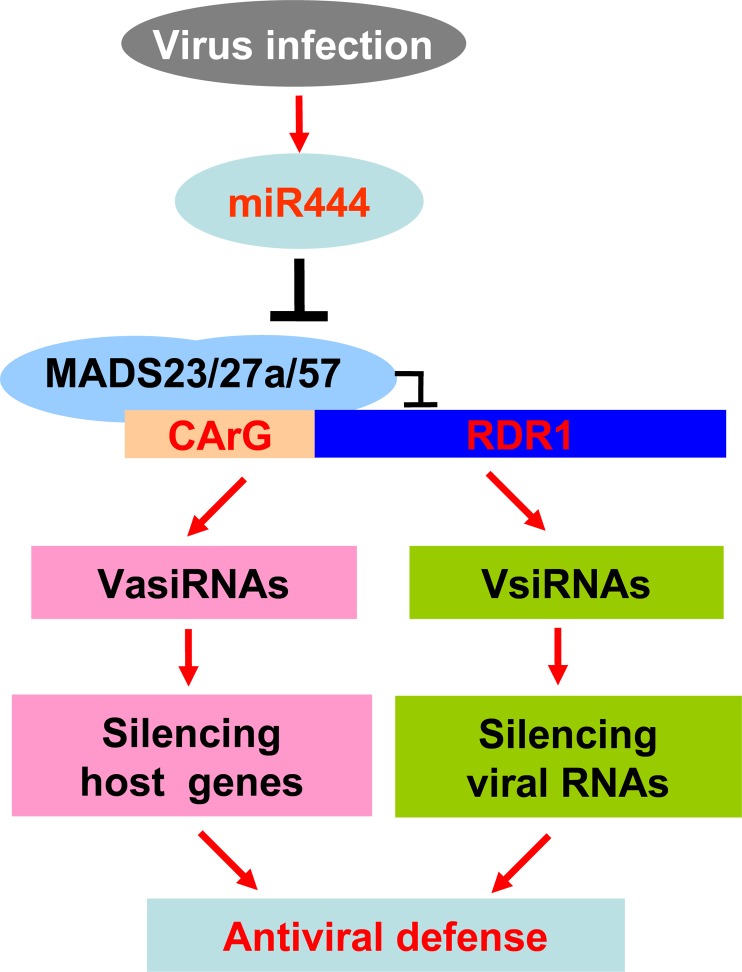Figure 9.
Model of the miR444-RDR1 signaling cascade in the rice antiviral RNA-silencing pathway. Three miR444 targets, OsMADS23, OsMADS27a, and OsMADS57, form homodimers, heterodimers, or even polymers between them to repress the expression of OsRDR1 by binding directly to the CArG motifs of its promoter. Upon virus infection, miR444 expression is induced. Consequently, an increased level of miR444 diminishes the repressive roles of OsMADS23, OsMADS27a, and OsMADS57 on OsRDR1 transcription. Then, the OsRDR1-dependent RNA-silencing pathway is activated to defend against viral infection by producing vsiRNAs to directly silence viral RNAs and virus-activated siRNAs (VasiRNAs) to silence host genes for the activation of broad-spectrum antiviral activity.

